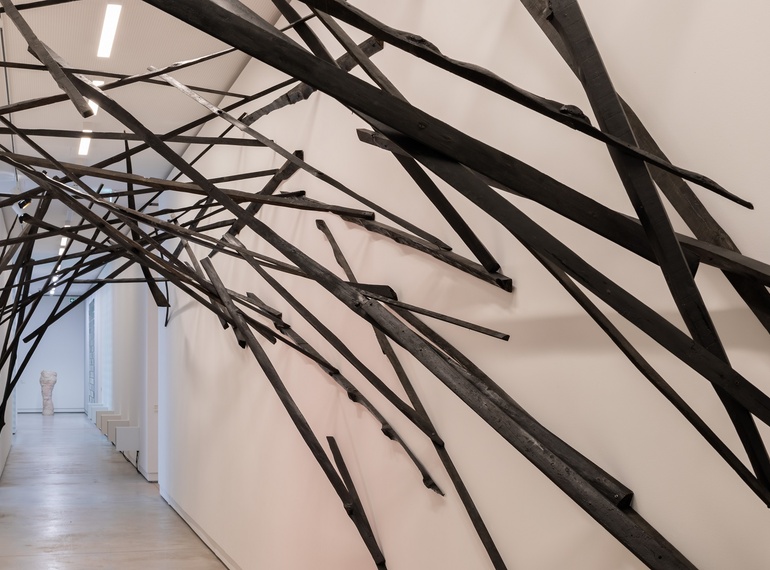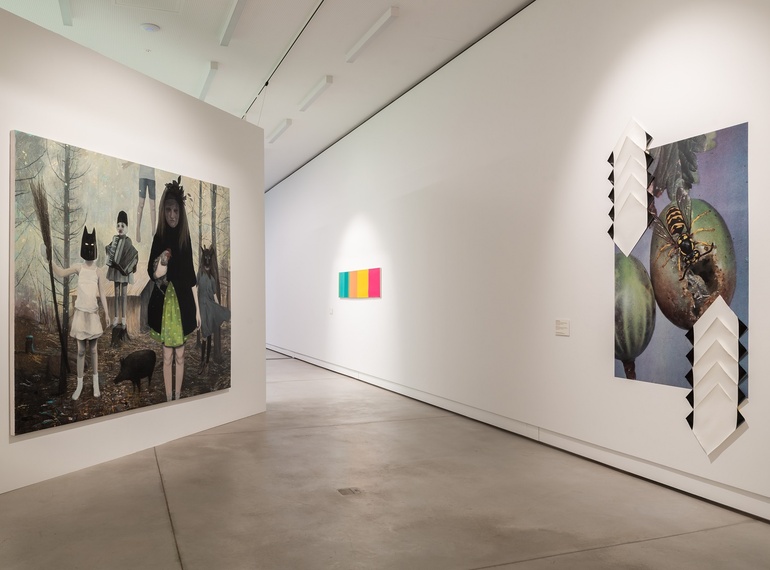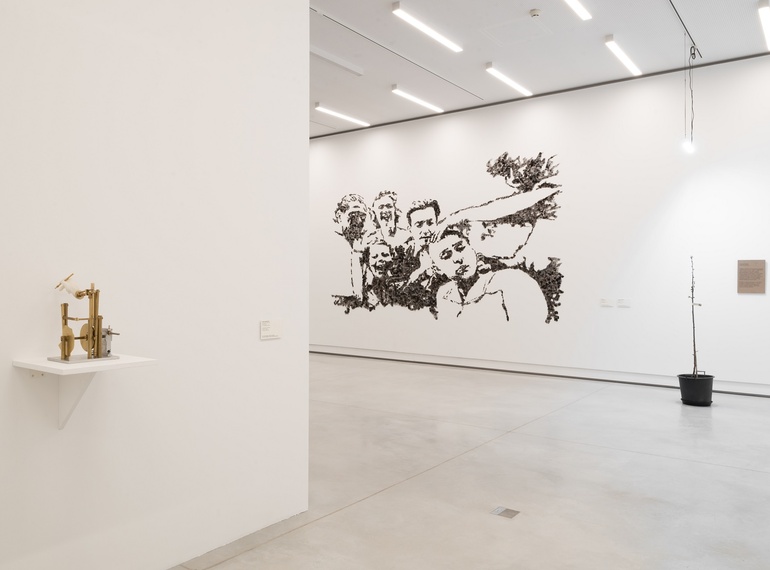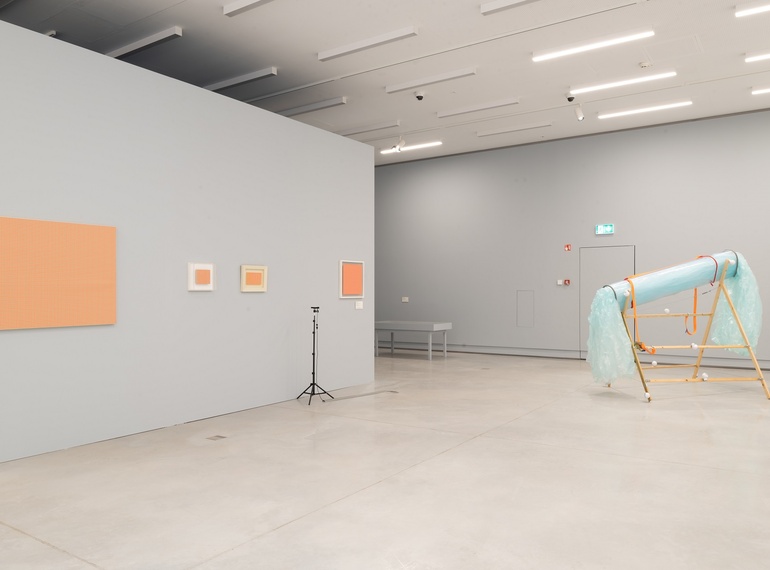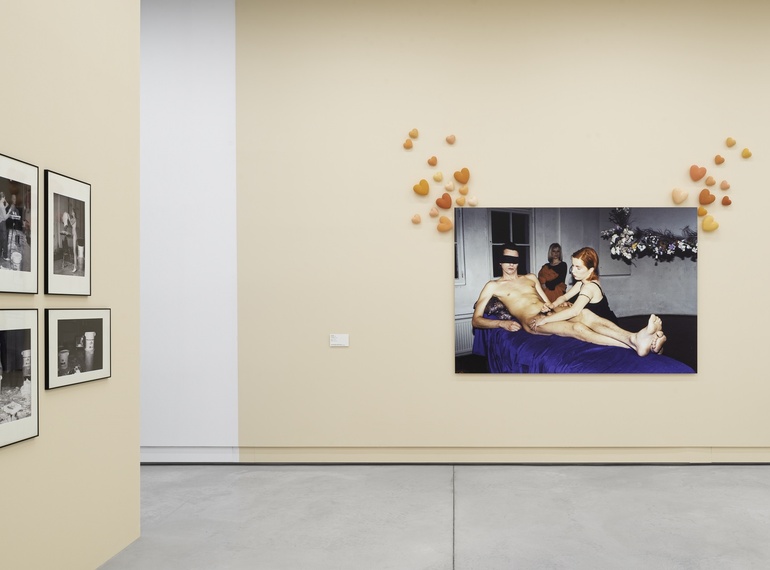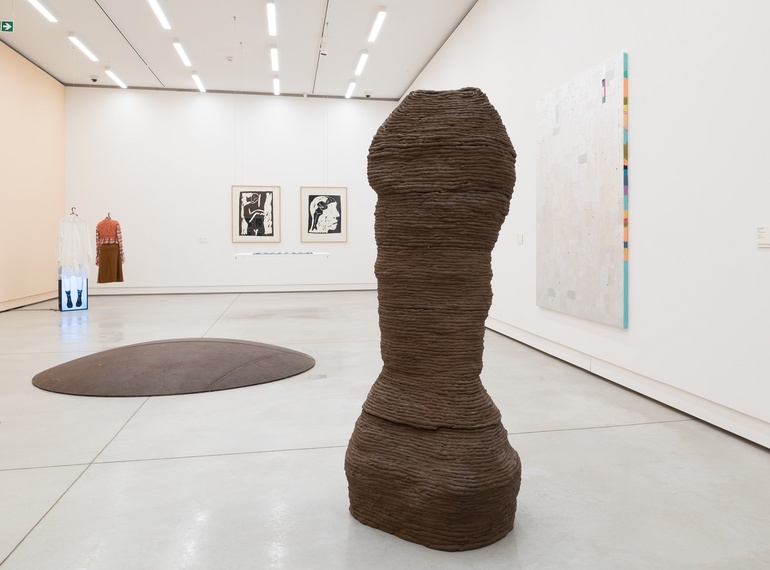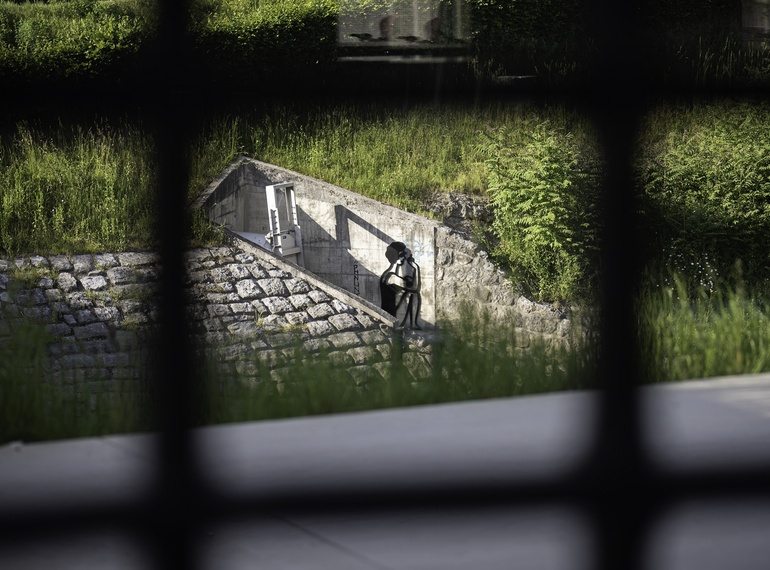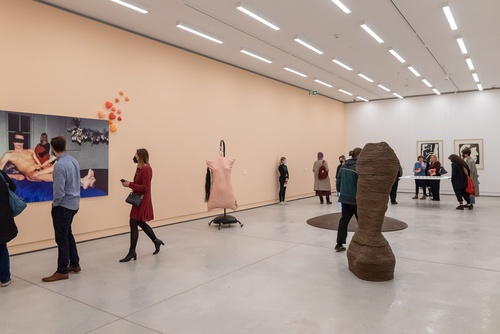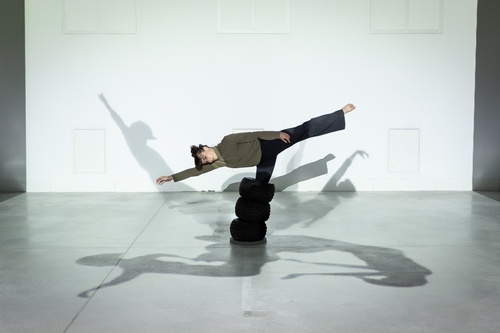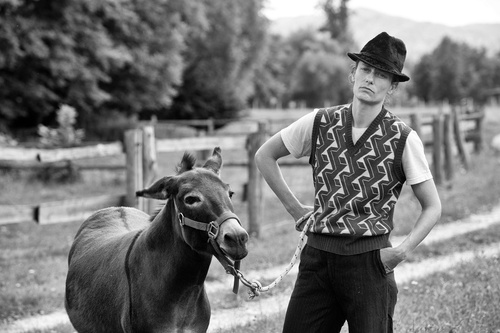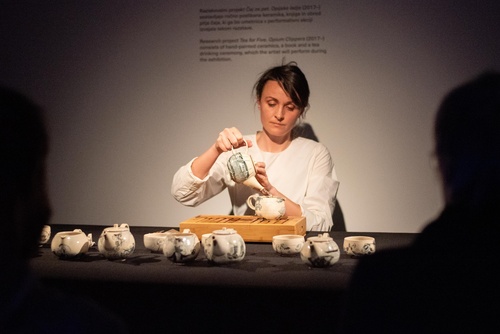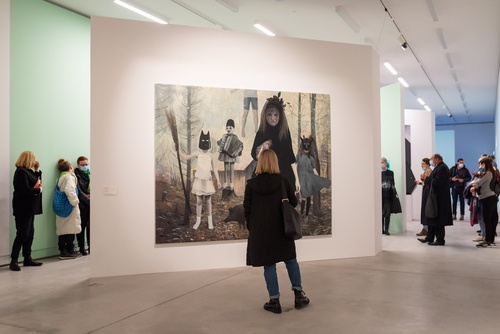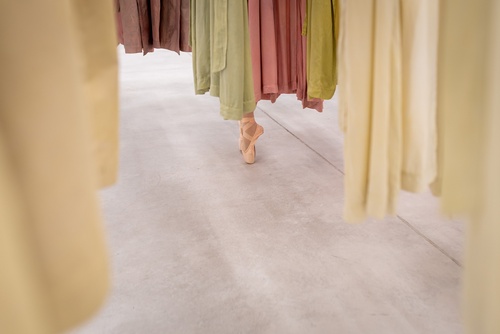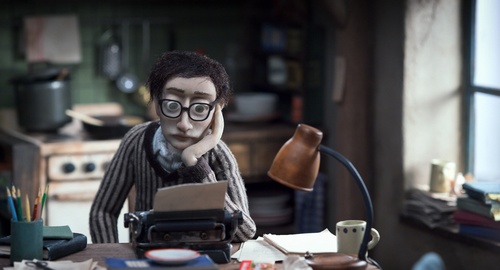Returning the Gaze

Nika Autor, Lela B. Njatin, Uršula Berlot Pompe, Suzana Brborović, Mateja Bučar, Jasmina Cibic, Lea Culetto, Dragica Čadež, Špela Čadež, Ksenija Čerče, Tina Dobrajc, Eclipse, Elena Fajt, Feminalz/Tatovi podob, Meta Grgurevič, Olja Grubić, Sanela Jahić, Duša Jesih, Andrea Knezović, Metka Krašovec, Ema Kugler, Tanja Lažetić, Maja Licul, Polonca Lovšin, Aprilija Lužar, Sanja Nešković Peršin, Špela Petrič, Alenka Pirman, Irena Pivka, Marjetica Potrč, Nataša Prosenc Stearns, Marija Mojca Pungerčar, Nataša Ribič, Lina Rica, Rene Rusjan, Maruša Sagadin, Duba Sambolec, Ana Sluga, Mojca Smerdu, Maja Smrekar, Saša Spačal, Zora Stančič, Robertina Šebjanič, Nika Špan, Apolonija Šušteršič, Neja Tomšič, Polona Tratnik, Milena Usenik, Aleksandra Vajd, Petra Varl, Kamila Volčanšek, Tanja Vujinović, Irena Z. Tomažin, Joni Zakonjšek, Mojca Zlokarnik, Zdenka Žido, Nataša Živković, Janja Žvegelj
Curated by Alenka Gregorič, Mara Anjoli Vujić, Mateja Podlesnik, Alenka Trebušak
The group exhibition Returning the Gaze offers a glimpse into the creative processes and practices of nearly sixty women artists, all either Slovenian or working in Slovenia, from the 1990s to the present day. It offers a rounded though by no means exhaustive overview of a period whose art historical narrative has been largely shaped by many of the artists featured, some of whom have already left the art scene, some who are just entering it. Many of the works in the exhibition are either characteristic of a particular period or groundbreaking in their approach or execution. Some of them focus on specific social themes, such as issues of identity, gender and feminism and the way women artists are represented in the art system. Special attention has been paid to female artists who have consistently adhered to a particular style of expression, approach, form or concept, as well as to those who have enabled us to view certain events in the past more systematically. Each of the works in the exhibition deals with perennial preoccupations such as human nature, human relationships, be that with other people or the environment or other forms of life, and the impacts of techno, science, society and politics.
The exhibition offers an extensive selection of paintings, sculptures, videos, performances, interventions and audio events, as well as an accompanying programme of presentations, film screenings, lectures and discussions; the aim being to shed light on aspects of today’s Slovenian art scene by creating dialogical relationships between the works of artists from different generations, all using different media, practices and approaches. In searching for commonalities and overlaps within these works, while also seeking to combine fragments from the prolific art production of the last thirty years into an overarching story, the curators have identified four main themes: urban and natural landscapes; the body or figure; the art system; and the socio-political environment.
For many artists these themes are inseparably connected, but these loose yet defining concepts have helped us design the gallery space to follow the “direction of the gaze”, so as to bring out the various visual, thematic and conceptual links between the artists and the coherent, multifaceted ways in which they express themselves artistically. Some themes and media have had to be omitted, simply because they would have required at least twice the gallery space we have available. This is regrettable, since the Slovenian art scene can boast many excellent women artists – illustrators, photographers, architects, filmmakers and graphic, industrial and fashion designers – who would certainly have deserved to be included in the exhibition.
This “direction of the gaze”, also alluded to in the exhibition title, addresses the eternal question of who is doing the looking and who is being looked at – who it is that is being confronted with the other’s gaze, in other words. In his book based on the famous BBC television series Ways of Seeing, John Berger explores the centuries-long history of painting and sculpture, highlighting the ways in which women have been looked at. Regardless of whether their role in the art work is as metaphor or iconographical element, women have consistently been presented as objects of desire intended to satisfy the male gaze. And this has been compounded by the fact that women’s artistic creativity has all too often been hidden from the public eye. Denied, misunderstood and, until fairly recently, marginalised.
Tuesday to Sunday: 10.00–19.00
Adults: 6 €
Students, retirees, visitors with disabilities: 4 €
Family ticket: 14 €
Admission free: children 7 and under, ICOM, PRESS
